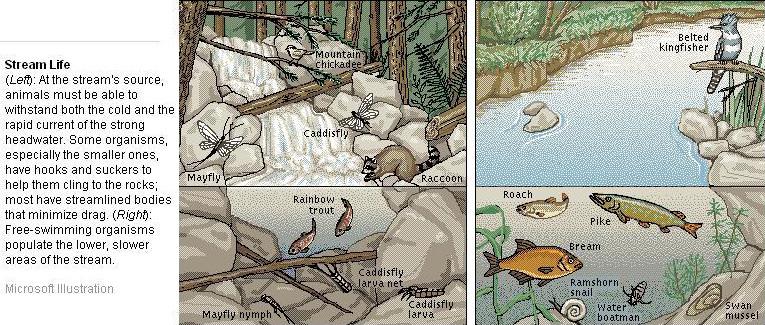Ecosystems

Microsoft Illustration
Ecosystems: A more useful way of looking at the terrestrial and aquatic landscapes is to view them
as ecosystems, a word coined in 1935 by the British plant ecologist Sir Arthur George Tansley to
stress the concept of each locale or habitat as an integrated whole. A system is a collection of
interdependent parts that function as a unit and involve inputs and outputs. The major parts of an
ecosystem are the producers (green plants), the consumers (herbivores and carnivores), the
decomposers (fungi and bacteria), and the nonliving, or abiotic, component, consisting of dead
organic matter and nutrients in the soil and water. Inputs into the ecosystem are solar energy, water,
oxygen, carbon dioxide, nitrogen, and other elements and compounds. Outputs from the ecosystem
include heat of respiration, water, oxygen, carbon dioxide, and nutrient losses. The major driving force
is solar energy.
"Ecology," Microsoft(R) Encarta(R) 96 Encyclopedia. (c) 1993-1995 Microsoft
Corporation. All rights reserved. (c) Funk & Wagnalls Corporation. All rights reserved.
Back To
 Flora & Fauna
Flora & Fauna

Design by:
 Pagoda Vista
Pagoda Vista





